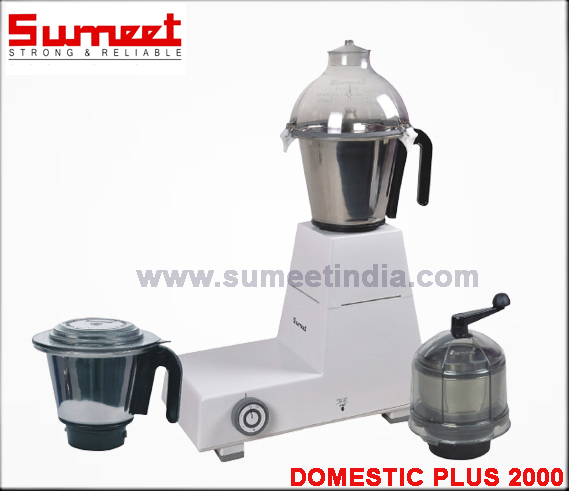Registered with the Registrar of Newspapers for India under R.N.I 53640/91
Vol. XXXIII No. 20, February 1-15, 2024
Sumeet Saga
Business Houses of the South by Sushila Ravindranath
There was a time when Sumeet Mixer ruled the roost in the highly crowded domestic appliances market and was a household name in Madras. Though strictly not a Madras company, it had a major manufacturing unit in the city and in the 90’s, of every 100 mixers sold, 30 were made by Sumeet, the largest selling brand in the country. The promoters were the Mathur family. They started as a tiny 8-mixers per month set up in 1963 and grew to a corporate entity capable of making 100,000 units a month in the mid 90’s.
In the 50s, the German multinational Siemens undertook a comprehensive survey to identify products it could manufacture for the Indian market. It chose mixers. Unbelievable though it may sound the government refused to grant a license to Siemens as these appliances were reserved for the small-scale sector and not open to outsiders. Satya Mathur, a senior engineer with Siemens, got permission from his bosses to set up a mixture manufacturing unit. Four other engineers decided to go with him. They started working on an Indian mixer. To suit Indian cooking, the mixer’s motor had to run for longer durations than the Western models. The shape of the mixer was designed by Madhuri, Satya’s wife.

By 1969, the Mathurs had floated a couple of proprietary companies one of which was Power Control and Alliances manufacturing Sumeet products. Mathur quit his job in Siemens only then. In the mid 70’s Sumeet managed to design a single jar for both dry and wet grinding and liquidising. The company cut the price from Rs 960 to Rs 740 per unit. This paved the way for Sumeet’s success. Sales shot up from 2,000 mixers a month in 1976 to 17,000 a month the next year. When sales zoomed to 50,000 a month in 1980, the management started a centralised unit in Madras to manufacture motors for its units in Madras, Bombay, Nasik and Vapi. That year Satya’s eldest son Ajay returned from the US with an MBA. Younger son Vivek too followed the same path and joined the business three years down the line.
In 1984, Mathur decided to expand and diversify into washing machines and vacuum cleaners. Sumeet Machines Pvt Limited was jointly promoted by Ajay and Vivek. Sadly problems began to erupt as soon as the first washing machine rolled out of the factory. According to Vivek, his older brother Ajay was trying to ease him out of the management and refused to practise the legalities involved in being allowed to use the Sumeet brand name. Ajay saw himself as the owner of the name. The Sumeet trademark was first registered in 1970 with Madhuri Mathur as the proprietrix of the manufacturing company, Power Control and Appliances. After the incorporation of Sumeet Research and Holdings Limited, the holding company of the Mathur Group, the family started fighting over who was entitled to use the Sumeet brand name.
Vivek accused Ajay of trying to cut everybody in the family out of the Sumeet brand name – “ All group companies have to acquire a trademark license from the holding company. They also must trade their products through the existing network. Ajay however insisted on a parallel network. He started building a separate dealer network. He did not follow the established rules.”
Replied Ajay, “When SMPL was incorporated, part of its name included the brand name. It was however not expected to manufacture mixers.” This led to much bitterness in the family. There was confusion and chaos in the market. Legal battles were fought over who owned the brand. This went up to the Supreme Court which ruled in favour of the parent company. The judgement said very clearly that it is a settled principle of law relating to trademark that there can only be one mark, one source and one proprietor. The dealers were delighted that there was clarity finally over a very popular brand. However Ajay continued to put spokes in the wheel and he also wanted to go public.
There were legal squabbles galore. Each side went after the other. The family just could not come to any kind of agreement to move forward. With the economy opening and foreign brands also entering the market, a product which should have been a market leader started fading away.

